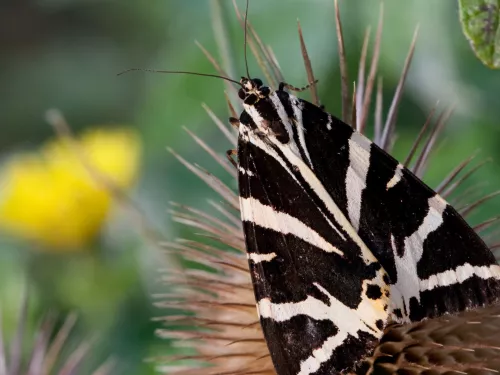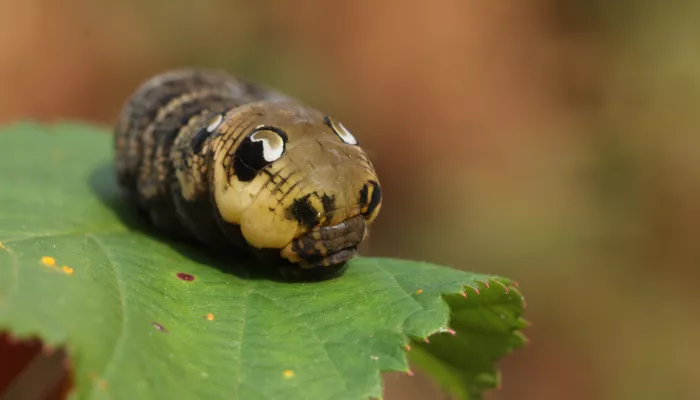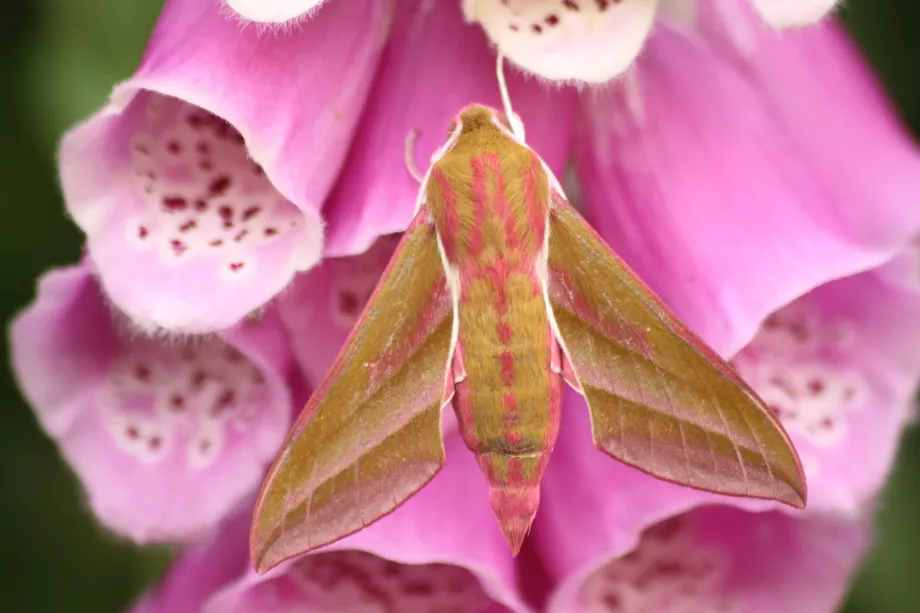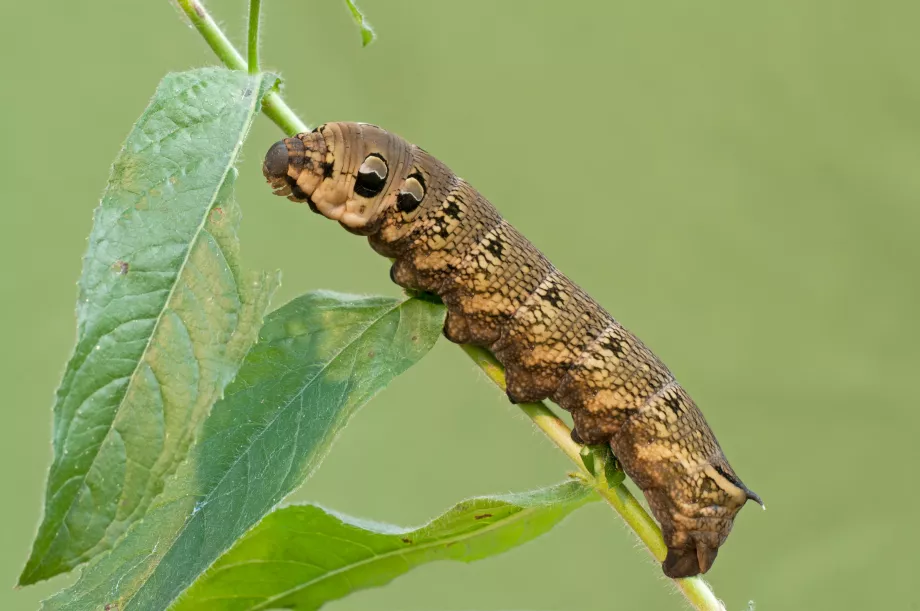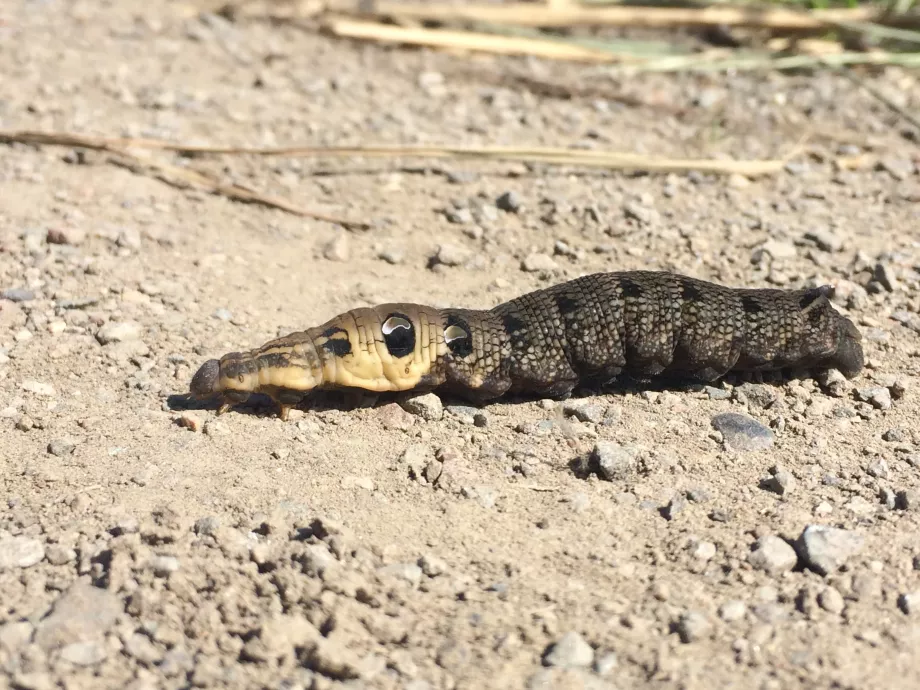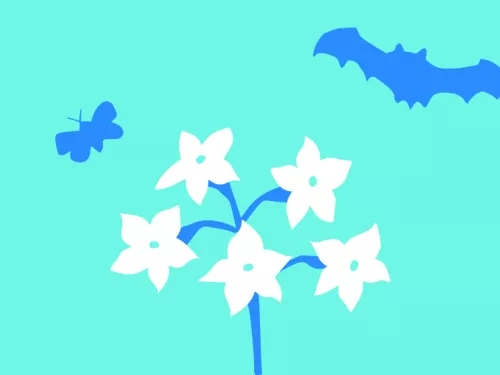Elephants and eye spots
Looking at the adult moth, it’s hard to imagine how it earned the epithet of elephant. Sure, they’re big, but they’re far from the largest hawk-moth in the country. To solve that mystery, we have to seek out a caterpillar. When they’re fully grown, elephant hawk-moths are one of the largest and most distinctive caterpillars you’re likely to find.
They grow to around 8cm long, are chunky, and usually brown with darker markings that give them a slightly wrinkled look. As a result, they do look a bit like an elephant’s trunk! Like other hawk-moth caterpillars, they have a short ‘horn’ on their rear, which has a white tip. But their most distinctive features are the large eyespots just behind the head. There are two on each side of the body, black circles with a paler crescent within. These large, fake eyes help put off potential predators. To add to the effect, the caterpillars can partially retract their actual head – giving them the look of a cartoon snake.
